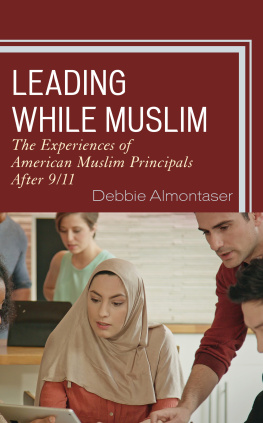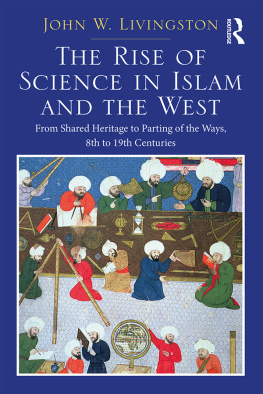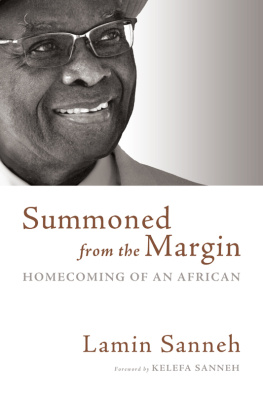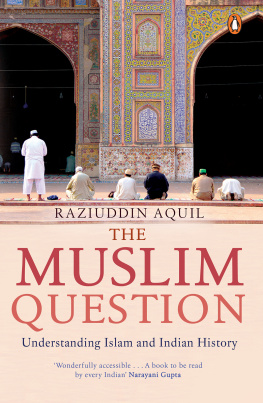AFRICAN ETHNOGRAPHIC STUDIES
OF THE 20TH CENTURY
Volume 58
THE JAKHANKE
THE JAKHANKE
The History of an Islamic Clerical People of
the Senegambia
LAMIN O. SANNEH
First published in 1979 by the International African Institute.
This edition first published in 2018
by Routledge
2 Park Square, Milton Park, Abingdon, Oxon OX14 4RN
and by Routledge
711 Third Avenue, New York, NY 10017
Routledge is an imprint of the Taylor & Francis Group, an informa business
1979 International African Institute
All rights reserved. No part of this book may be reprinted or reproduced or utilised in any form or by any electronic, mechanical, or other means, now known or hereafter invented, including photocopying and recording, or in any information storage or retrieval system, without permission in writing from the publishers.
Trademark notice: Product or corporate names may be trademarks or registered trademarks, and are used only for identification and explanation without intent to infringe.
British Library Cataloguing in Publication Data
A catalogue record for this book is available from the British Library
ISBN: 978-0-8153-8713-8 (Set)
ISBN: 978-0-429-48813-9 (Set) (ebk)
ISBN: 978-1-138-59776-1 (Volume 58) (hbk)
ISBN: 978-0-429-48675-3 (Volume 58) (ebk)
Publishers Note
The publisher has gone to great lengths to ensure the quality of this reprint but points out that some imperfections in the original copies may be apparent.
Disclaimer
The publisher has made every effort to trace copyright holders and would welcome correspondence from those they have been unable to trace.
THE JAKHANKE
The History of an Islamic
Clerical People of the Senegambia
Lamin O. Sanneh
INTERNATIONAL AFRICAN INSTITUTE
To Sandra, devoted wife
and mother, with love and admiration
CONTENTS
INTERNATIONAL AFRICAN INSTITUTE
210. High Holborn, London WC 1 V 7 BW
ISBN 0 85302 059 0
All rights reserved
International African Institute 1979
Printed in Great Britain
MAPS
The Senegambia Region
Jakhanke Dispersions in West Africa
Jakhanke Centres in Bundu (Senegal)
Jakhanke Centres in Niokholo and Dentilia (District of Kdougou, Senegal)
Jakhanke Centres in the Gambia and Casamance (Senegal)
FIGURE
The descendants of Karamokho Ba who succeeded to spiritual leadership of the Jakhanke community at Touba
An abridged version of Chapter One appeared as The origins of clericalism in West African Islam, in the Journal of African History XVII (1976) 4972. An expanded version of Chapter Nine appeared as Slavery Islam and the Jakhanke people of West Africa, in Africa 46 (1) (1976) 8097.
Cover photo: Shaykh Farqi Jakhabi reading from a family history, Sutukung, the Gambia.
I am grateful to a great number of people for their assistance in the course of preparing this work originally as a thesis for the Ph. D. at the University of London. I can only mention a few. I must thank the Theological Education Fund for a grant to undertake this work and the Central Research Fund of the university of London for helping to finance part of the field-work. I should also like to thank the Methodist Church Overseas Division, London, for valuable assistance on the field. My thanks go to Mr Momodou Jabi, my invaluable Jakhanke field-assistant in Senegambia, for his loyalty and willingness and for giving unstin-tingly of his time and services, and my friend Fanding who introduced me to him. Mr E.A. Njie, then Development Engineer at Mansakonko, kindly provided transport for many of the trips into the country. I owe him a profound debt. In this connection the following people helped in facilitating my field-surveys: Mr Salieu Cham, then of the Establishment Office, Banjul; Mr Edward Sowe Jnr, at the Ministry of Local Government, and his colleagues the District Commissioners; the then Medical Officer at Bansang, Dr Lamin Kurang; Mr Larson-Parry of Mansakonko, and Mr Mowdo Joberteh of the Basse Area Council. I would also like to thank Mr Albert Andrews, formerly of the Education Department, Banjul, who lightened my load in numerous ways, and Janko, Seni and Fatu Sise, all of Serrekunda, for love and hospitality, and other friends and relatives who had to suffer neglect during my investigations. My greatest debt of all is due to the many Jakhanke people who placed at my complete disposal their rich knowledge and resources and stimulated me in pursuing what was a new subject for me.
It is traditional for research students to record a word of appreciation to their supervisors and I happily embrace that tradition in sincerely thanking Dr Humphrey Fisher for first bringing the topic to my attention and then for meticulously and painstakingly following every step of the work. I must also, within that tradition, record my gratitude to Dr John B. Taylor of Birmingham whose earlier tutorials introduced me to the study of Arabic and Islamics and thus laid the foundations on which the present enterprise in large measure rests. Dr David Dalby of London read through the revised draft of the work and I am indebted to him for calling my attention to many points of detail.
Many authors speak appreciatively of the contribution of their editors, and none could do so with more reason than myself. I have benefited greatly from the detailed scrutiny under which Nicola Harris has put this book. Her high standards have helped me to avoid many embarrassments over factual details as well as interpretation. It is only with her scrupulous sifting and unyielding precision that this book has reached this stage. I owe her an incalculable debt. But she and all the others are of course absolved from responsibility for any remaining defects, inaccuracies and peculiarities in the work, for which I remain solely responsible.
I owe a special debt of gratitude to my wife, Sandra, for her patience during the strains of composition, and her invaluable expertise which made her bear the brunt of typing the manuscript as a thesis and for stimulating me to revise it. Her unflagging zeal withstood the numerous alterations and changes I made to the text as she was going through it, and her critical eye was responsible for removing many obscurities and inconsistencies. Her sympathy and good humour buoyed me up constantly during a concentrated and strenuous exercise.
In the transliteration of Arabic I have followed in the main the Encyclopaedia of Islam, New Edition, except in the following particulars. I have written j for dj, q for , and the hamza at the beginning or end of a word is not shown. Also I have disregarded the ligature for letters like sh, dh and gh. All Qurnic quotations, except where otherwise indicated, are from Arberrys translation. The Koran Interpreted, but his line arrangements are not followed. The verse-numbering of the Qurn is that of the European Flgel version. Also I have differed from the








